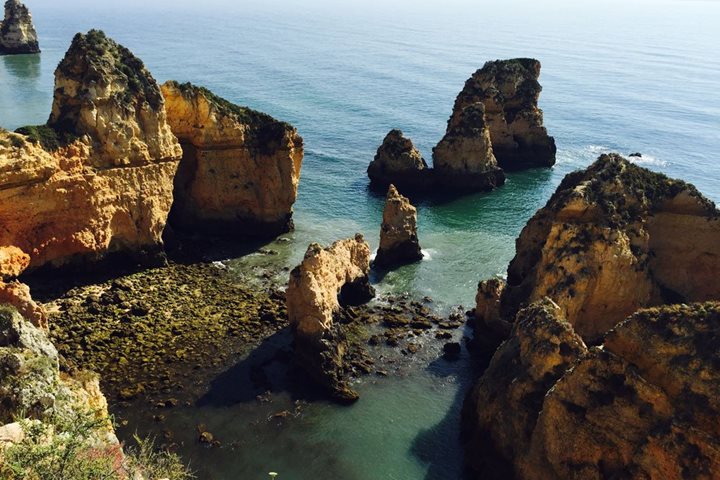Our explorations today revealed many different sides of the Western Mediterranean world, from geology and marine biology to classical architecture, marine archeology and the vibrant modern culture of one of Spain’s most historic cities.
The day got off to a leisurely start, with chance to sleep in a bit and a late breakfast – much appreciated after our long day out yesterday. While we broke our fast the National Geographic Orion was cruising slowly along the Costa del Sol in beautiful conditions, calm and warm, perfect for our plan to spend the morning searching for marine mammals.
In this region the Spanish coastline has a very narrow continental shelf that plunges to depths of over five thousand feet just a few miles off shore. This is the Mazarrón Escarpment, a precipitous underwater cliff that stretches for over one hundred miles from end to end. Upwelling currents here bring mineral nutrients from the depths of the Western Mediterranean Basin to the surface, where they nourish a rich food chain that includes plankton, fish, squid and the whales and dolphins that feed on them.
Our bridge officers and naturalists were up early scanning the seas around us, with help from Jacob Edgar, our ethno-musicologist, who added some alluring music. It wasn’t long before Captain Lubo spotted a group of striped dolphins, two or three miles ahead of the ship and turned our course toward them. We could see them easily, a group of fifteen or so, leaping and splashing through the small waves. As we approached more closely they suddenly altered their direction and swam directly toward us, then swerved again to match our course, gathered around our bow and began to surf the pressure wave there, sometimes turning to look up at us and then bursting out of the water for a breath of air. It was a thrilling display of speed and grace from these elegant animals – exactly what we had hoped for.
In the afternoon we docked in Cartagena, a city founded by a Carthaginian general in the third Century BCE. As is the case with so many European cities, Cartagena is now a palimpsest of architecture, one layer built upon another through the centuries, so that the spires of gothic churches rise beside steel and glass office towers, while standing themselves on the ruins of older Moorish mosques. The best example of this intimate interleaving of historical periods is Cartagena’s beautiful Roman Theatre. Its ruins were first discovered in 1988 during construction of a new museum. Further excavations revealed the extent and importance of the theatre and by the time restoration was completed in 2003 an entire neighborhood of the city had been slowly and carefully removed from the site, exhuming an elegant treasure from the past, the second largest Roman Theater on the Iberian Peninsula.
On our afternoon walking tour we rode a spectacular elevator 180 feet up the vertical side of one of the seven hills that surround Cartagena, then walked a network of paths to the summit where we visited a centuries-old fortress, built and rebuilt by the many civilizations that have come and gone in the city, from Roman times to the present day. Another pleasant stroll, downhill this time, led us to the famous Roman Theater where we went through the excellent museum and then into the beautifully restored theater itself. Here again we saw the astounding layering of one architectural style after another – the curved rows of the theatre’s original seats surmounted by a gothic palace gate and leading down to later walls and foundations built with rubble from other parts of the Roman construction.
Making our way back to the ship at her berth in the harbor that first attracted the Carthaginians to the site of the city, through a busy, chic shopping district, we felt ourselves to be a part of pageant of continuing history in a way that is unique to these ancient and vibrant European cities.





